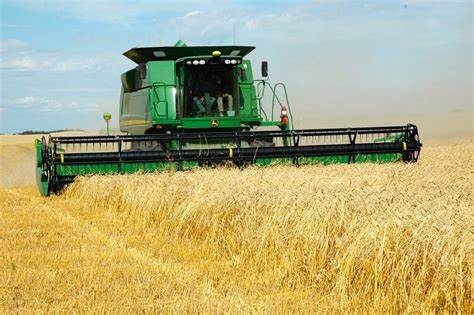Combine Settings in a Bad Skinning Year for Malting Barley
2 September 2020With the malting barley harvest now underway, it is being reported that skinned grain levels are higher than normal in grain samples. This can lead to deductions or worse costly rejections with subsequent redirections charges and a significantly reduced value as feed barley.
What is skinning?
Grain skinning occurs when the husk has become detached from the underlying seed with malting contracts typically allowing for 5% of grains to be classed as “skinned” or having lost 20% of their husk.
Skinned grains impact on the malting process by causing reductions in malting efficiency and ultimately lower malt production.
Varietal choice, later harvesting, high rainfall during grain filling and at maturity have all been identified as factors leading to higher levels of skinned grains. By this stage in the season there is little that can be done about these factors however combine settings can also play a major role.
With mixed weather and overcast skies meaning that harvest conditions are perhaps not ideal there may be a tendency to push the combine forward whilst making sure that all grains are taken out in the threshing process with chaff, weeds and small grains blown over the tail leaving a nice, clean sample of grain in the tank.
While ensuring a good sample is produced is important, SRUC trial work in 2015 found the following affected levels of skinning.
Drum speed
Grain skinning was found to increase as drum speed was increased. Drum speed can be increased for a number of reasons – to achieve better separation of grain in challenging conditions or even to counteract the effects of wear and tear on older combines however in some circumstance it can have a clear effect on grain quality. This was particularly more significant in “susceptible” varieties with the difference less marked in more “resistant” varieties.
Concave settings
The same trial showed that levels of skinning also increased as the concave was set closer to the drum. Although closer settings lend themselves to better threshing particularly if barley is retaining its awns, opening the concave is gentler on the grain.
Steve Hoad, Crop Improvement and Agronomy Team Leader at SRUC said “Our work on different combine harvester settings support the observation from previous research that mechanical impact is required to cause husks to become detached. Our work indicates that skinning severity is strongly linked to changes in combine settings, with faster or coarser settings increasing the risk.”
It is also important to ensure that combines are properly maintained as grain can also be damaged in other parts of the combine e.g. if clean grain or returns elevators are slack.
As modern combines have a wide range of threshing systems, growers should always refer to the manufacturers handbook. Finding the balance between ensuring optimum combine performance, a clean grain sample and making sure it doesn’t unnecessarily increase skinned grains may be tricky at times if crop condition changes however achieving it may help obtain the best price possible for the grain.
Sign up to the FAS newsletter
Receive updates on news, events and publications from Scotland’s Farm Advisory Service

